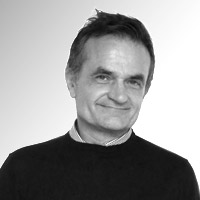
Improving cement industry’s environmental footprint
An overview of suitable emission reduction technologies and waste heat recovery system
CTP is a leading engineering and manufacturing Company with 50 years experience in the fields of environmental systems and Heat recovery. With innovative products in the field of Filtration, Gas Cleaning, Heat Exchangers and Waste Heat Recovery, CTP can design and install customized installations to fulfill Client’s constraints and expectations.
In our headquarter in Kilometro Rosso Innovation District - Bergamo - Italy, we develop all our products and projects with our teams of engineers, R&D specialists, senior project managers and installation expertise.
Through the manufacturing workshop located in Adana –Turkey, with a team up to 140 people, CTP can provide all the advantages of a state-of-the-art manufacturing workshop and the application of the highest standards of quality for welding, certified by TUV. A qualified team of site supervisor and workers complete our staff for the most demanding customers looking to EPC contracts. The European Green Deal provides a roadmap with actions to achieve net-zero greenhouse gas emissions by 2050. To do this the decarbonisation and modernisation of energy-intensive industries such as cement is essential. A far as stack emissions are concerned , the Best Available Techniques (BAT) is the document to be used as reference or preventing or minimizing emissions and impacts on the environment.
In order to help cement producers in the modernization and decarbonization of the plants, we will take in consideration the BAT to focus on thin dust particulate (PM10, PM 2,5) dust particule control and the latest challenges for high temperature filtration, ESP Filter and SO2 emissions, NOx emissions control.
As seen, the technologies today available can guarantee a complete control of the pollutants released in the environment by the exhaust gas, according to the Bref documentation. However, emissions control equipment are obviously all energy consuming; in some cases, high abatement efficiency can have a considerable impact on the production cost and, on top of that, contribute to improve emission of GHG (CO2).
Waste Heat Recovery (WHR) is a profitable, low-carbon, environmentally friendly system to produce electricity by recovering heat from industrial processes. The most common technology used to produce power from a waste heat is based in general on the Rankine Cycle.
Further benefits:
- Energy sustainability: the thermal energy is recovered and converted into electricity feeding a circular energy system
- Environment-friendly: it doesn’t make use of natural resources such as water
- Low-emissions: the energy produced by WHR system cut the CO2 emissions normally produced by the other energy sources
- Dependency from the grid: protect from unforeseen blackout
- Saving: cover partially the internal needs and cut the cost of electricity bill
Waste heat sources in the cement process are:
- The exhaust air from the clinker cooler (AQC)
- The exhaust gas from the preheater (PH)
The WHR is composed by one (AQC) or two boilers (AQC + PH) normally combined with an Organic Rankine Cycle system for power production; steam technology is also an option, but less reliable and natural resources consuming.
The typical configuration considers to transfer the heat from the boiler to the ORC by thermal oil. The ORC system, is a quite compact system that takes advantage from the thermodynamic cycle of a suitable organic fluid expanded in a turbine. The system is fully automatically controlled and doesn’t need specialized personnel different from that one already working in the cement plant.
The conversion efficiency from thermal to power energy is in the range of 22 ÷ 25% according to the quality of the available heat and ambient conditions. The installation of a WHR boiler on the exhaust air coming form a clinker cooler, can introduce additional advantages in case an ESP in installed. As all the dedusting equipment, also the ESP works on the actual volume flow; when a WHR is installed upstream, the temperature of the flow reaching the ESP is lower and the flow is reduced accordingly, with respect to the ESP design value.
As all the dedusting equipment, also the ESP works on the actual volume flow; when a WHR is installed upstream, the temperature of the flow reaching the ESP is lower and the flow is reduced accordingly, with respect to the ESP design value. Conversely, a temperature reduction direct effect on the collecting efficiency cannot be guaranteed.

